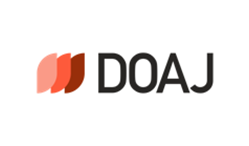КОНКУРЕНЦІЯ МІЖ ДОЛАРОМ ТА ЄВРО: РЕЗУЛЬТАТИ РЕГРЕСІЙНОГО АНАЛІЗУ ДЛЯ УКРАЇНИ
Ключові слова:
долар США; євро; монетарна система; валютний курс; резерви; регресія; дисперсія.Анотація
У статті досліджено фактори, які впливають на стабільність резервних валют. Проведено аналіз економічних показників України, який показує тісний взаємозв’язок ВВП, індексу споживчих цін, експорту, імпорту та обмінних курсів. Незважаючи на те, що 2022 р. був роком турбулентності для євро, основною світовою резервною валютою є долар США. Серед факторів, які сприяють домінуючій позиції долара, виокремлюють його стабільну вартість, обсяг економіки США та її геополітичну силу. Ефективне управління взаємодією долара США та євро має вирішальне значення для глобальної економі чної стабільності та зростання. Обидві валюти можуть співіснувати та зростати, а євро потенційно може сприяти більш збалансованій глобальній валютній системі. Проведений кореляційно-регресійний аналіз конкуренції між доларом та євро виявляє суттєві взаємозв’язки між ними, підкреслюючи їхній вплив на світові економічні процеси.
Класифікація за JEL: C30; E40; E50; F31.
Посилання
Alquist, R., Chinn, M.D. (2002). Productivity and the Euro-dollar exchange rate puzzle. National Bureau of Economic Research. https://www.nber.org/ papers/w8824
Barrientos Nieto, O. (2023). Dollarizing the economy: what does it mean and which countries have implemented Javier Milei’s proposal? El País. https://english.elpais.com/economy-and-business/2023-11-24
Beck, T., Bednarek, P., te Kaat, D., von Westernhagen, N. (2022). The real effects of exchange rate depreciation: The role of bank loan supply. CEPR Discussion Paper, 17231. https://cepr.org/voxeu/columns/real-effectsexchange-rate-depreciation-role-bank-loan-supply
Bremmer, I. (2023). The dollar is dead, long live the dollar. GZERO. https://www.gzeromedia.com/by-ian-bremmer/the-dollar-is-dead-long-livethe-dollar
Cingari, P. (2023). Could the euro collapse? Reuters Plus. https://www.reuters.com/ plus/could-the-euro-collapse
Clostermann, J., Schnatz, B. (2000). The determinants of the Euro-dollar exchange rate: Fundamentals and a non-existing currency. Economic Research Group of the Deutsche Bundesbank. https://ideas.repec.org/p/ zbw/bubdp1/4138.html
Dluhopolskyi, O., Simakhova, A., Zatonatska, T., Kozlovskyi, S., Oleksiv, I., Baltgailis, J. (2021). Potential of virtual reality in the current digital society: economic perspectives. 11th International Conference on Advanced Computer Information Technologies (ACIT), 360-363. https://doi.org/10.1109/ACIT 52158.2021.9548439
DXY (2024). Where the world does markets. Market summary. https://www.tradingview.com
Eun, C. S., Kim, S.-H., Lee, K. (2015). Currency competition between the dollar and euro: Evidence from exchange rate behaviors. Finance Research Letters, 12, 100-108. https://doi.org/10.1016/j.frl.2014.11.003
Farion, A., Dluhopolskyi, O., Banakh, S., Moskaliuk, N., Farion, M., Ivashuk, Y. (2019). Using blockchain technology for boosting cyber security. 9th International Conference on Advanced Computer Information Technologies (ACIT), 1-6. https://doi.org/10.1109/ACITT.2019.8780019
Federal Reserve Bank of St. Louis (2024). The fluctuating value of the U.S. dollar and what it means for investors. Nominal Broad U.S. Dollar Index. https://www.usbank.com/investing/financial-perspectives/market-news
Hartmann, P. (1999). Currency competition and foreign exchange markets: The dollar, the yen and the euro. European Central Bank. Cambridge University Press. https://doi.org/10.1017/CBO9780511492384
Ilzetzki, E., Jain, S. (2023). Euro weakness in 2022. VoxEU. https://cepr.org/ voxeu/columns/euro-weakness-2022
Jaworski, P. (2008). Becker, Joachim; Weissenbacher, Rudy (eds.): Dollarization, Euroization and Financial Instability. Central and Eastern European Countries between Stagnation and Financial Crisis? Czech Sociological Review, 44(6), 1228-1230. https://nbn-resolving.org/urn:nbn:de:0168-ssoar-65421
Koziuk, V. (2014). Reserve currency status in the global economy: the problem of temporal conflicts. Visnyk of the National Bank of Ukraine, 4, 30-36. http://nbuv.gov.ua/UJRN/Vnbu_2014_4_20
Koziuk, V. (2022). Drivers of gold fraction in global exchange reserves. Journal of European Economy, 21(2), 137-153. https://doi.org/10.35774/jee2022.02.137
Koziuk, V. (2023). Under pressure of digitalization and geopolitical challenges: Internationalization of currencies and their reserve status. Journal of European Economy, 22(3), 350-374. https://doi.org/10.35774/jee2023.03.350
Lagarde, C. (2023). The international role of the euro. https://www.ecb.europa.eu/press
Li, W. (2004). Currency competition between Euro and US Dollar. Working Paper Business Institute Berlin, 18. https://hdl.handle.net/10419/74369
Mačí, J. (2020). Is there a trend of euroization of EU countries still using their national currencies? Trade and invoicing. E&M Economics and Management, 23(4), 182-196. https://doi.org/10.15240/tul/001/2020-4-012
Ministry of Finance (2024). https://index.minfin.com.ua
Moosa, I. A. (2002). A test of the Post Keynesian hypothesis on expectation formation in the foreign exchange market. Journal of Post Keynesian Economics, 24(3), 443-457. https://doi.org/10.1080/01603477.2002.11490335
Nikolaichuk, S. (2023). Monetary and exchange rate policy of the NBU: Between fixation and floating. https://www.epravda.com.ua/columns/2023/12/6/707405
Norrlof, C. (2009). Key currency competition: The euro versus the dollar. Cooperation and Conflict, 44(4), 420-442. http://www.jstor.org/stable/45084584
Otero Iglesias, M. (2011). The euro vs dollar debate: A review. Real Instituto Elcano. https://www.realinstitutoelcano.org/en
Peter G. Peterson Foundation (2024). Why is the national debt so high? https://www.pgpf.org
Rochon, L.-P., Rossi, S. (2003). Dollarization out, Euroization in. International Journal of Political Economy, 33(1), 21-41. https://www.jstor.org/stable/40470826
Schnatz, B., Vzjselaar, F. (2003). Productivity and the (synthetic) Euro-dollar exchange rate. ECB Working Paper, 225. https://www.ecb.europa.eu/pub/pdf/ scpwps/ecbwp225.pdf
Siripurapu, А., Berman, N. (2023). The Dollar: The World’s Reserve Currency. https://www.cfr.org/backgrounder/dollar-worlds-reserve-currency
Suslenko, V., Zatonatska, T., Dluhopolskyi, O., Kuznyetsova, A. (2022). Use of cryptocurrencies Bitcoin and Ethereum in the field of e-commerce: case study of Ukraine. Financial and Credit Activity Problems of Theory and Practice, 1(42), 62-72. https://doi.org/10.55643/fcaptp.1.42.2022.3603
Waters, J. (2021). 5 questions from Global Trends 2040. Capita. https://www.capita.org/capita-ideas/2021/4/14
Zatonatska, T., Suslenko, V., Dluhopolskyi, O., Brych, V., Dluhopolska, T. (2022). Investment models on centralized and decentralized cryptocurrency markets. Naukovyi Visnyk Natsionalnoho Hirnychoho Universytetu, 1, 177-182. https://doi.org/10.33271/nvngu/2022-1/177
##submission.downloads##
Опубліковано
Як цитувати
Номер
Розділ
Ліцензія
Автори, які публікуються у цьому журналі, погоджуються з наступними умовами:
- Автори залишають за собою право на авторство своєї роботи та передають журналу право першої публікації цієї роботи на умовах ліцензії Creative Commons Attribution License, котра дозволяє іншим особам вільно розповсюджувати опубліковану роботу з обов'язковим посиланням на авторів оригінальної роботи та першу публікацію роботи у цьому журналі.
- Автори мають право укладати самостійні додаткові угоди щодо неексклюзивного розповсюдження роботи у тому вигляді, в якому вона була опублікована цим журналом (наприклад, розміщувати роботу в електронному сховищі установи або публікувати у складі монографії), за умови збереження посилання на першу публікацію роботи у цьому журналі.
- Політика журналу дозволяє і заохочує розміщення авторами в мережі Інтернет (наприклад, у сховищах установ або на особистих веб-сайтах) рукопису роботи, як до подання цього рукопису до редакції, так і під час його редакційного опрацювання, оскільки це сприяє виникненню продуктивної наукової дискусії та позитивно позначається на оперативності та динаміці цитування опублікованої роботи (див. The Effect of Open Access).








